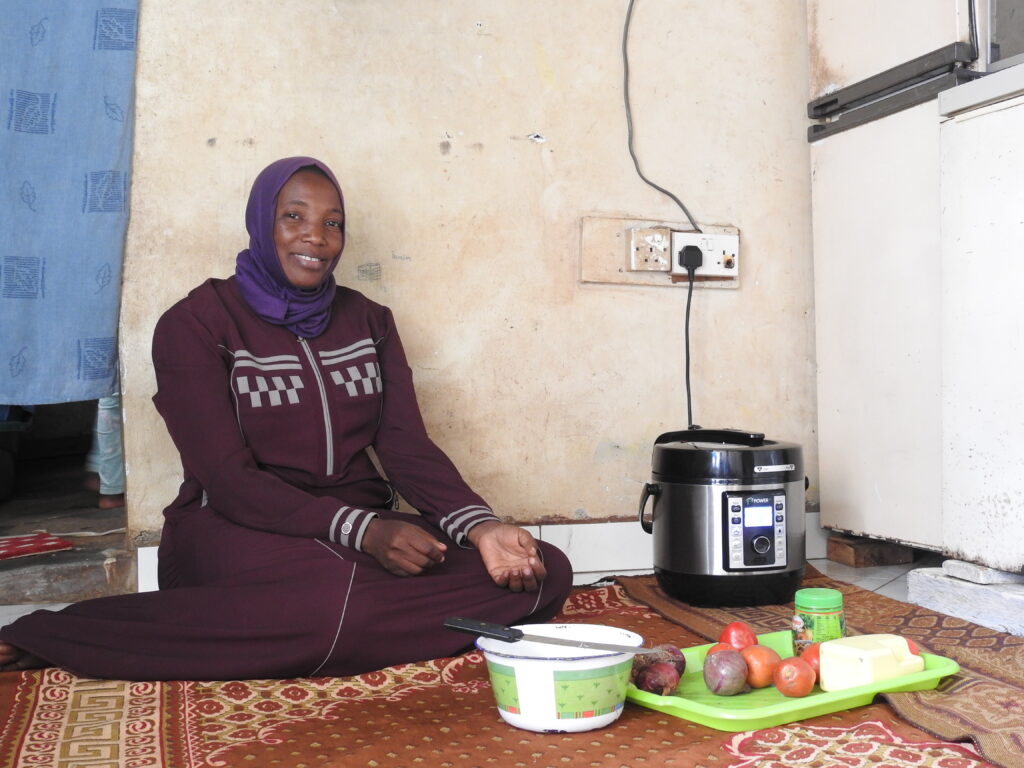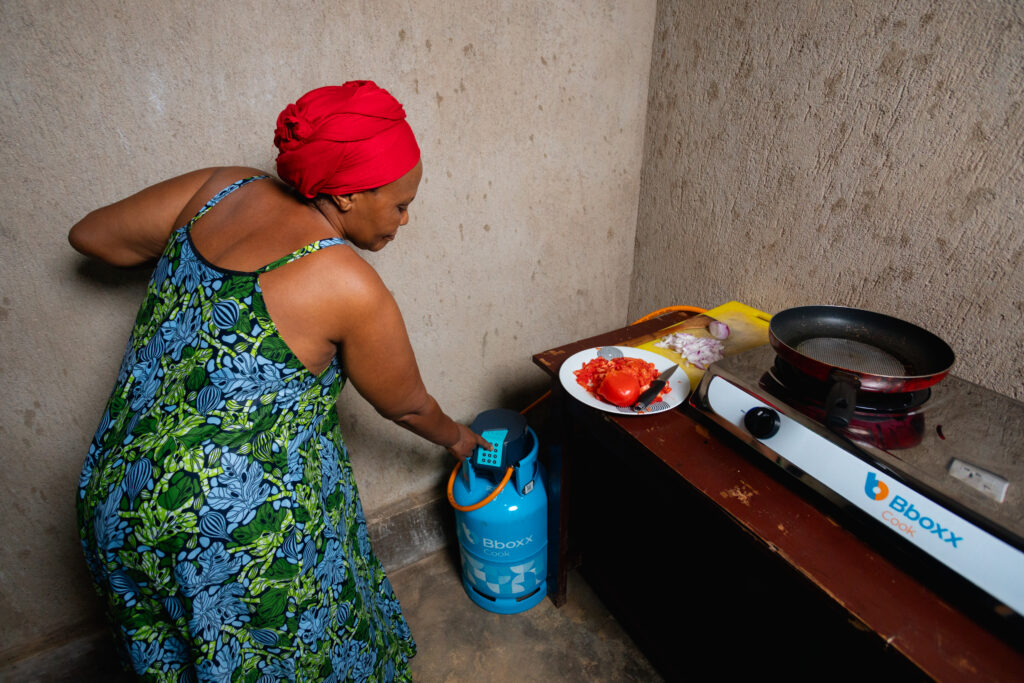ICE: The Billion-Ton Carbon Reduction Opportunity of Clean Cooking
Intercontinental Exchange (NYSE: ICE) offers some of the world’s largest markets to trade and clear energy and environmental products. The Clean Cooking Alliance (CCA) spoke with Gordon Bennett, Managing Director of Utility Markets and Head of Environmental Markets, about ICE’s involvement in clean cooking carbon markets and their importance in a sustainable energy transition.
This interview is part of a series of conversations CCA is having with business leaders across the clean cooking sector.
 © Peter Irungu/Clean Cooking Alliance
© Peter Irungu/Clean Cooking Alliance
Clean Cooking Alliance (CCA): Tell us about ICE’s services.
Gordon Bennett (Bennett): Intercontinental Exchange, Inc. (NYSE: ICE) is a Fortune 500 company that designs, builds, and operates digital networks. ICE was founded in the year 2000 on the principle of bringing price transparency to energy markets. ICE became a first mover in environmental markets by providing technology to – and then acquiring – the Climate Exchange.
Today, ICE is a world leader in energy and environmental markets and hosts the most liquid carbon markets in the world, with a notional value of US $1trillion per annum. By combining price transparency in energy and environmental markets, our data, technology, and digital networks are at the heart of Net-Zero – the world’s most important energy transition and the mitigation pathway for climate risk.
ICE operates exchanges, including the New York Stock Exchange, and clearing houses that help people invest, raise capital, and manage risk across multiple asset classes. Our comprehensive, fixed income data services and execution capabilities provide information, analytics, and platforms that help our customers capitalize on opportunities and operate more efficiently. At ICE Mortgage Technology, we are transforming and digitizing the U.S. residential mortgage process, from consumer engagement through to the capital markets. Together, we transform, streamline, and automate industries to connect our customers to opportunity.
CCA: What makes clean cooking carbon projects attractive to ICE?
Bennett: First, let me start by explaining what a carbon market is for. The root cause of climate risk is that, historically, the atmosphere has been predominantly free to use. Therefore, to address climate risk effectively, we can utilize economics and markets to help preserve the ultimate scarce resource, using carbon markets to crystallize financial liabilities that reflect polluters’ physical emissions. Today, this only happens at scale through government mandates making polluters pay.
Clean cooking projects are important to ICE for several reasons.
First, the energy transition is complex, unfolding in different ways around the world due to factors like resource availability and financial capacity.
Second, incentivizing capital for clean cooking initiatives is crucial for energy transitions in developing countries, especially Africa. These projects can yield over 1 billion (metric) tons of carbon reductions. Income from carbon credit sales incentivizes these reductions and brings additional benefits, such as reducing premature deaths, empowering women and girls, and alleviating energy poverty. Carbon credits serve as a proxy to deliver these many societal benefits, beyond reducing atmospheric carbon.
Carbon credits serve as a tool for wealth transfer from developed nations, who have consumed most of the atmospheric carbon budget, to developing nations – enabling their growth while achieving Net Zero goals. Because of these attributes, we think clean cooking can serve as a catalyst for creating a carbon market where polluters voluntarily pay for their emissions without being mandated by governments.
CCA: The fragmented nature of the carbon market has created price volatility and uncertainty. Why does this happen and what are the consequences?
Bennett: Certainly! Let’s delve into the intricacies of the carbon credit market and explore why it experiences both price volatility and uncertainty.
Imagine a bustling marketplace where people gather to exchange goods and services. From flea markets to supermarkets, each serves a unique purpose. Financial markets, like those operated by ICE, play a critical role. They manage price risk, ensuring efficient capital allocation and driving economic growth. In these financial markets, participants – that is, buyers and sellers – express their view of value through price. Intermediaries facilitate transactions, much like insurance agents.
Now, let’s focus on the carbon credit market. It’s a mosaic of diverse approaches to carbon reduction and removal. Carbon credits represent the savings achieved by reducing or removing one ton of carbon dioxide. However, not all methods yield the same atmospheric impact or have identical production costs. Consequently, we could see varying prices for different carbon outcomes. This fragmentation isn’t inherently problematic; it reflects the multifaceted nature of carbon reduction efforts.
Financial markets adapt to fragmentation by creating benchmarks, or proxies. These benchmarks prioritize liquidity over precision. A benchmark instrument with deep liquidity emerges to manage diverse price risks. It becomes a reference point for participants navigating this complex landscape.
Carbon markets differ from typical voluntary markets. In most markets, willing buyers signal demand for goods or services. However, today, carbon markets predominantly rely on government mandates to make polluters pay for their emissions. Without robust demand signals, uncertainty prevails. The challenge lies in bridging this gap—creating stronger demand signals to drive meaningful carbon savings.
In summary, while fragmentation plays a role, the heart of the matter lies in diverse carbon-saving methods and the need for a more resounding demand signal. A market cannot exist without demand. As a society, we need to see value in carbon savings.
CCA: ICE has promoted auctions as a way of creating a market reference price for clean cooking carbon credits. Why is this important and what goes into this process?
Bennett: We promote carbon auctions to create transparent market prices for clean cooking carbon credits. This addresses market opacity and encourages transactions in a public, regulated marketplace. By improving the primary market, we hope to lay the groundwork for a secondary market and create a market feedback loop to help solve for quality – where developers who produce quality goods at attractive prices will thrive. Think of carbon credit auctions like an equity IPO, allowing investors and buyers to transact with confidence.
We must recognize the public good of a carbon price signal to incentivize the production of carbon savings and to promote a sustainable capital allocation to balance the ultimate scarce resource of the atmospheric carbon budget.
As Michael Greenstone, Milton Friedman Distinguished Professor of Economics at the University of Chicago, aptly put it, “if you don’t have price, you are in the land of the fairies, unicorns, and (pots of gold at the end of the) rainbows.” Clear pricing is necessary for a market to function effectively.
CCA: What impact might we see from efforts to improve the transparency and sustainability of clean cooking carbon markets, including the contracts-for-difference-inspired Carbon Price Support Facility?
Bennett: Efforts to improve transparency and sustainability in clean cooking carbon markets aim to make carbon credits more accessible. Currently, only 24% of carbon emissions are directly priced, and many stakeholders are unfamiliar with carbon markets. These initiatives provide guidelines and information, reducing barriers for potential investors and buyers, and addressing initial questions about entering the market. This can help incentivize behavioral change by creating financial liabilities that reflect polluters’ emissions and allowing them to offset those liabilities by buying carbon assets, such as credits, to address the root cause of climate risk.
CCA: How do you see carbon finance for clean cooking developing over the next 5-10 years, particularly around customer considerations of price and credit quality?
Bennett: Carbon credits from clean cooking will be a barometer of whether society “voluntarily” values carbon savings.
A carbon credit is a beautiful instrument as it simultaneously allows a polluter to pay for the negative externality of their emissions – economically incentivizing them to meet their Net Zero targets – as well as incentivizing the producers of carbon savings and other critical societal benefits.
I am optimistic that, in the next 5-10 years, carbon finance for clean cooking will grow significantly, delivering those 1 billion (metric) tons of emission reductions per annum whilst reducing energy poverty, improving health, and empowering women and girls.
This will be the catalyst for increased deployment of carbon pricing in economic decisions – driving demand for carbon savings not only from clean cooking, but also nature-based solutions and engineered removals.
A market feedback loop will evolve, where quality and cost-effectiveness are prioritized, and we will finally be on the road to addressing the root cause of climate risk: that there has been no historical cost to use the atmosphere. We will then be on a more optimistic path to deliver Net Zero.


